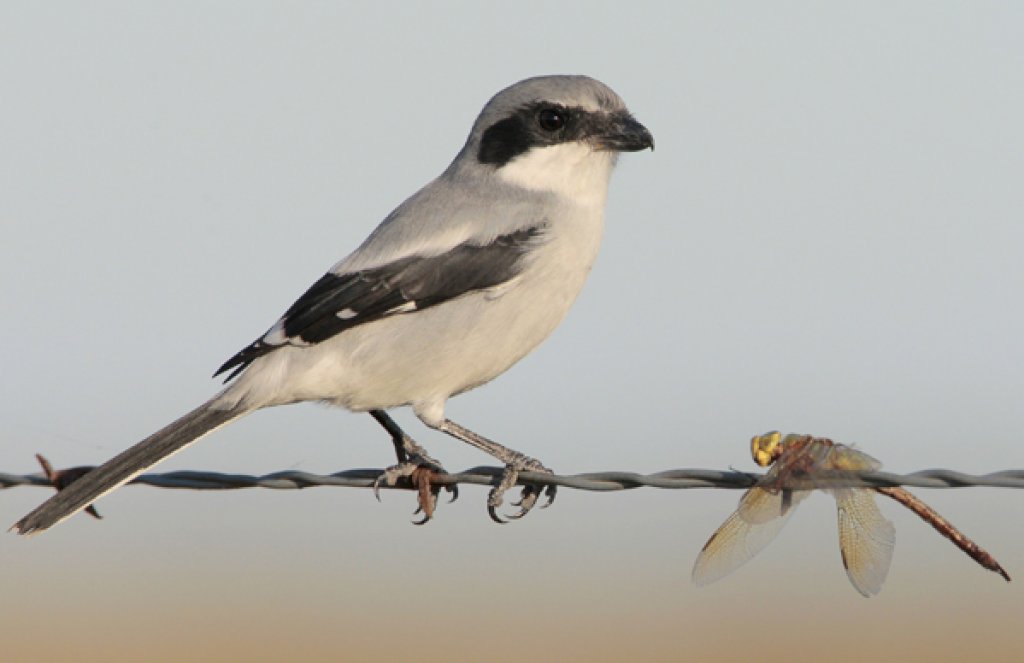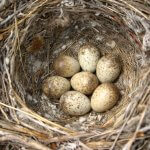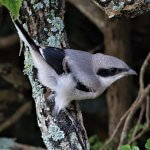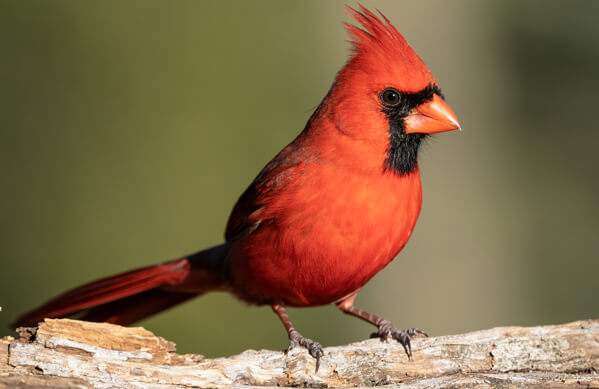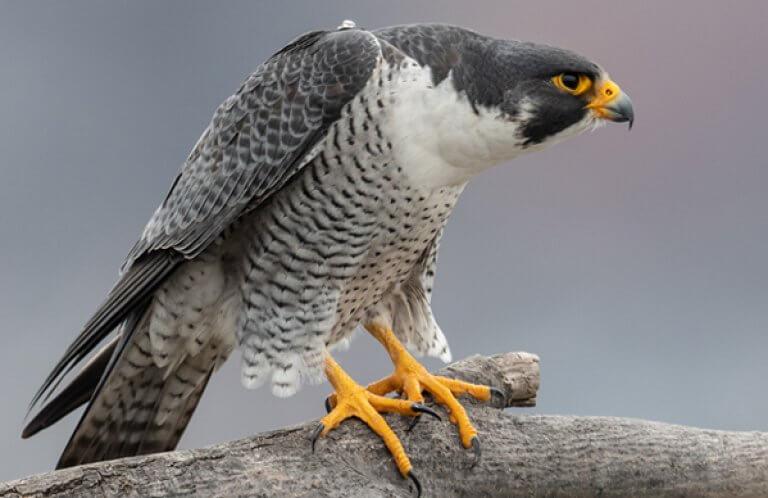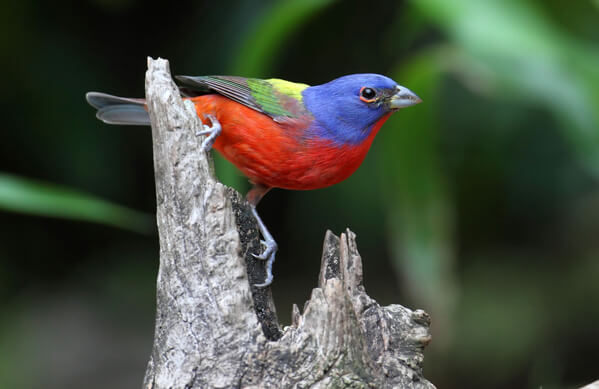About the Loggerhead Shrike
The predatory Loggerhead Shrike is a distinctive songbird found only in North America. The word “loggerhead” refers to the large size of this shrike's head in relation to its body, which gives it a bull-headed look. Roughly the size of a Northern Cardinal, the Loggerhead Shrike has gray plumage set off by a black mask and a stout, slightly hooked bill. Its black wings have white patches that “flash” as the bird flies, somewhat like a Northern Mockingbird's. Males and females look alike.
Although classed as a passerine (perching songbird), the Loggerhead Shrike's hunting habits give it a rather ominous nickname.
Predatory Passerine
The Loggerhead Shrike is widely known as the "butcherbird” for its habit of skewering its prey on thorns or barbed wire before it eats it. (Its genus name, Lanius, derives from the Latin word “butcher”). This rather ghoulish trait is actually a practical adaptation that compensates for the shrike's lack of strong, raptor-like feet and talons. It accumulates “larders” of prey to provide security against lean times, and males may also use a large food cache to impress prospective mates.
Songs and Sounds
The word “shrike” derives from the Old English word for “shriek,” referring to the Loggerhead Shrike's harsh vocalizations. Some compare its song to a mockingbird's, as it consists of a variable series of raspy, buzzy notes and trills.
Listen to a Loggerhead Shrike here:
Breeding and Feeding
Bringing Up Butcherbirds
Loggerhead Shrikes are territorial, and pairs aggressively defend their territory. During courtship, a male shrike performs short flight displays and brings food to the female. The pair builds a sturdy nest low in a dense, often thorny, tree or shrub. The male feeds the female while she incubates, sometimes bringing prey cached earlier. Both parents feed the nestlings, which leave the nest at two to three weeks but continue to be tended by their parents for another three to four weeks.
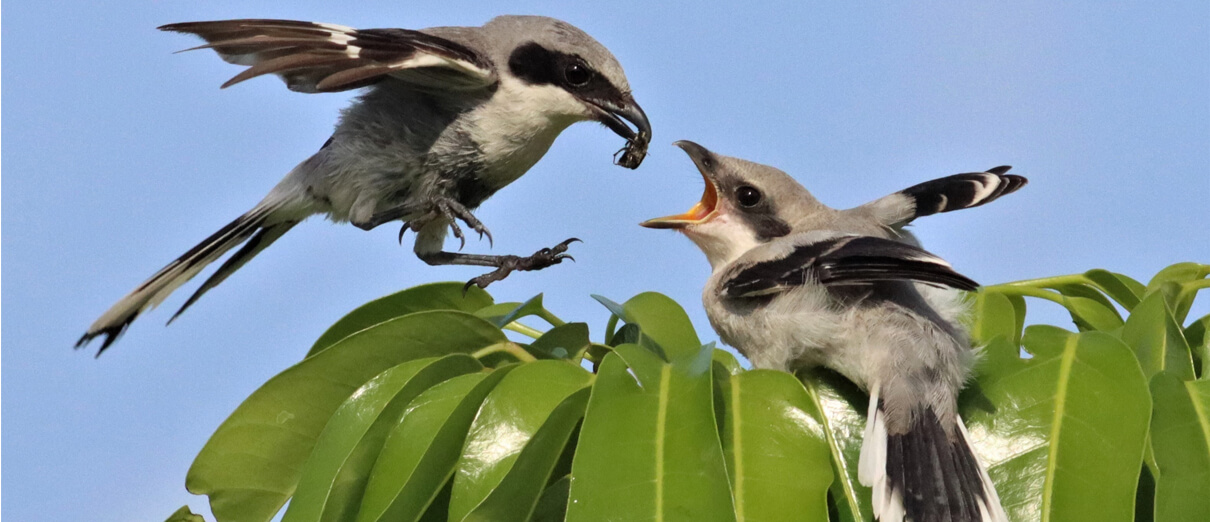
Newly fledged shrikes perform exaggerated versions of adult hunting behavior, including rudimentary impaling gestures. They seem to practice their skills by grasping objects in the tip of their bills and repeatedly touching them to a branch or perch, as if trying to get them to stick.
Hunting like a Hawk
The Loggerhead Shrike hunts by scanning the ground from an elevated perch, then pouncing onto its prey, which may include large insects, birds, snakes, lizards, and small mammals. They also hover-hunt like an American Kestrel and even hunt on the ground, flashing their wing patches to startle prey out of hiding.
The upper part of the shrike's hooked bill features a pair of built-in projections called “tomial teeth.” Like a Peregrine Falcon, the shrike uses these specialized “teeth” to dispatch vertebrate prey by a strike to the nape of the neck.
Region and Range

The Loggerhead Shrike ranges throughout most of North America, from southern Canada to southern Mexico. Although widespread, it has an uneven and local distribution, particularly in the northeastern U.S. In the northern portion of its range, it's a short-distance migrant that winters in the southern United States and Mexico. Farther south, the species is a resident year-round.
Ideal shrike breeding habitat consists of open habitats such as grasslands, agricultural areas with hedgerows, and pastures with scattered trees and shrubs.
There are 11 recognized subspecies of Loggerhead Shrike; the subspecies from San Clemente Island, in southern California, was listed as Endangered under the Endangered Species Act in 1977.
Conservation
The Loggerhead Shrike was recognized as a species in decline on the 2016 State of the Birds Watch List. In addition, Breeding Bird Survey data show that its populations have declined by almost 80 percent since 1966, a troubling trend which coincides with the introduction of chemical pesticides in the United States. Other likely causes for the Loggerhead Shrike's steep population decline are habitat loss, collisions, and human disturbance.
Beginning in 1996, ABC helped convince the U.S. Navy, which was using part of San Clemente Island as a bombing range, to expand protective measures for the Loggerhead Shrike subspecies there. Thanks to this effort, along with captive breeding, predator control, and other habitat management, the subspecies is steadily recovering.
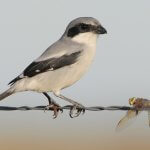
Help support ABC's conservation mission!
As part of the Oaks and Prairies Joint Venture (OPJV), ABC and other Migratory Bird Joint Venture partners are working to restore native habitat that will benefit the Loggerhead Shrike and other bird species of concern, including the Northern Bobwhite, Painted Bunting, and Black-capped Vireo. In 2013, the OPJV launched the Grassland Restoration Incentive Program (GRIP), which provides landowners with the technical and financial assistance needed to improve native grassland management on their lands.
ABC and partners were also instrumental in the 2022 ban of chlorpyrifos, a highly toxic organophosphate insecticide. Chlorpyrifos will no longer be used on food crops meant for domestic consumption, which will help protect birds and their habitats as well as human health.
Get Involved
Policies enacted by the U.S. Congress and federal agencies, such as the U.S. Fish and Wildlife Service, have a huge impact on U.S. birds. You can help shape these rules for the better by telling lawmakers to prioritize birds, bird habitat, and bird-friendly measures. To get started, visit ABC's Action Center.
Living a bird-friendly life can have an immediate impact on the birds around you. Doing so can be as easy as adding native plants to your garden, avoiding pesticides, and keeping cats indoors. To learn more, visit our Bird-Friendly Life page.
American Bird Conservancy and our Migratory Bird Joint Venture partners have improved conservation management on more than 8.5 million acres of U.S. bird habitat — an area larger than the state of Maryland — over the last ten years. This is a monumental undertaking, requiring the support of many, and you can help by making a gift today.





































